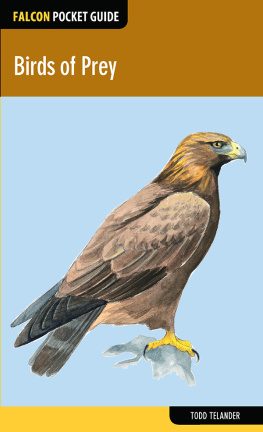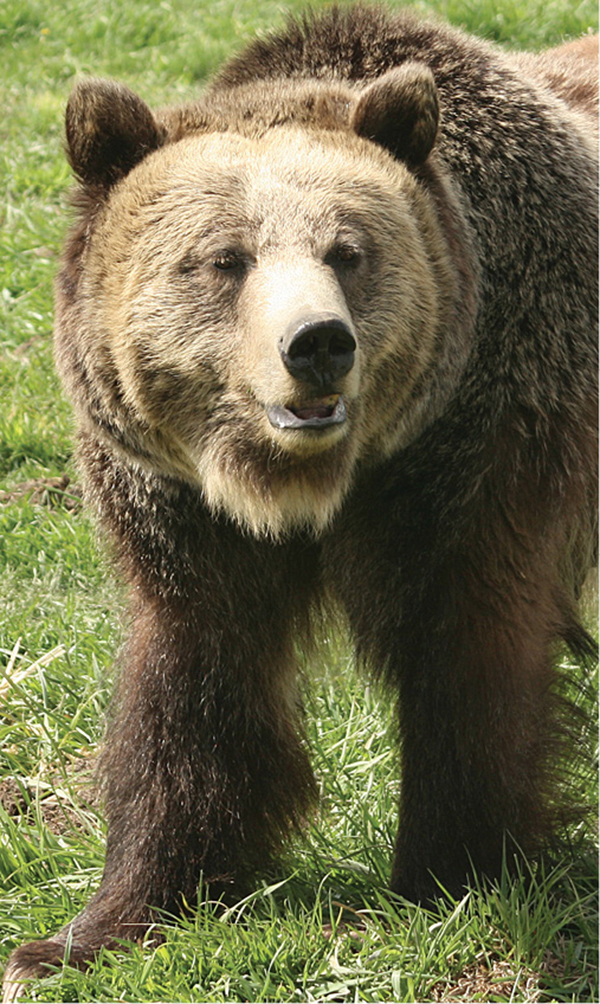GRIZZLY BEARS
Jack Ballard
2012 Morris Book Publishing, LLC
ALL RIGHTS RESERVED. No part of this book may be reproduced or transmitted in any form by any means, electronic or mechanical, including photocopying and recording, or by any information storage and retrieval system, except as may be expressly permitted in writing from the publisher. Requests for permission should be addressed to Globe Pequot Press, Attn: Rights and Permissions Department, PO Box 480, Guilford, CT 06437.
FalconGuides is an imprint of Globe Pequot Press.
Falcon, FalconGuides, and Outfit Your Mind are registered trademarks of Morris Book Publishing, LLC.
Project editor: David Legere
Text design: Sheryl P. Kober
Layout: Sue Murray
Photos by Jack Ballard unless otherwise noted
Library of Congress Cataloging-in-Publication Data
Ballard, Jack (Jack Clayton)
Grizzly bears / Jack Ballard.
p. cm. (A Falcon field guide)
ISBN 978-0-7627-8003-7
1. Grizzly bear. 2. Grizzly bearIdentification. I. Title.
QL737.C27B3478 2012
599.784dc23
2012000192
The author and Globe Pequot Press assume no liability for accidents happening to, or injuries sustained by, readers who engage in the activities described in this book.
To Russ, whose tutelage in research design and interpretation made this a better book.
Contents
Introduction
Hey, Jack, come check this out.
At my companions urging, I poke my head from the zippered door of a backpacking tent deep in the Absaroka-Beartooth Wilderness in Montana. It has snowed overnight, one of the hazards of camping in the high-elevation portions of the wilderness in September. I pull on my boots and a jacket and then scramble out of the tent. The sky above is blue and unclouded, the ground beneath my feet carpeted in 2 inches of snow. Weathered alpine grass pokes from the pale mantle. The gnarled evergreens behind our camp droop with snowflakes, sparkling, pure, and cheerful in the days first bashful rays of sunlight.
As beautiful and pristine as are the surroundings, it isnt the scenery that Brad is so impatient to show me. Waving his arm from the open meadow 100 yards from our tent, he beckons me with an expression somewhere between a smile and a scowl. I jog toward him, noticing a line of tracks leading from the edge of the timber across the clearing. Silently he points at the prints. They appear somewhat similar to fat, barefoot tracks of a human, but one feature indelibly sets these apart from the footprints of any naked, deranged individual cavorting about the alpine zone in a snowstorm at 2 a.m. In front of the toes on the prints are claw marks measuring several inches in length. The identity of the nighttime visitor is obvious. Our camp was closely bypassed by a grizzly bear.
But the bruin had no interest in us, or in the food cache we suspended from a tree 150 yards from our camp, although with its keen sense of smell it was most certainly aware of the presence of both. Instinctively I shiver, with both fascination and fear.
Grizzly bears arouse similar emotions in other humans to whom they are known. Many of the terrors and trepidations aroused by these indomitable predators are unfounded or greatly overestimated. However, only a fool treads unthinkingly into their domain without a large measure of respect and preparation. For a century or more, grizzly bears in North America have been maligned and misunderstood. Misinformation has been haphazardly distributed by both individuals who would have people believe grizzlies are bloodthirsty man-eaters and those who have falsely portrayed them as gentle giants. I offer this book in hopes that it will expand both your appreciation for and knowledge of these iconic creatures of the American wilderness.
The author would like to thank Jamie Jonkel, bear biologist with the Montana Department of Fish, Wildlife, & Parks for reviewing and making helpful suggestions on the manuscript.
CHAPTER 1 Names and Faces
Names and Visual Description
Names of certain animals are based on their appearance. Such is the case of the grizzly bear. Its coat is usually medium to dark brown in color. Long hairs, known as guard hairs, adorn grizzly bears along the back and shoulders. Protruding beyond the dense undercoat, the guard hairs of a grizzly bear are pale or white-tipped, giving the animals a grizzled look. A term historically used for the graying of hair on the human head, grizzle means to become gray or white. Early observers apparently likened the light guard hairs on grizzly bears to gray highlights in human hair. Thus, the name grizzly bear stems from the pale highlights in the dark coat of this large bear. In some locations this unique coloration on grizzly bears gave rise to another name, the silvertip bear, a historical term not commonly encountered in modern terminology. Captain Meriwether Lewis of the Lewis and Clark expedition sometimes referred to the grizzly bear as the white bear in his journals, evidently in reference to the light hair on upper portions of a grizzly bears body.
As previously mentioned, the typical coat of a grizzly bear appears as brown. However, individual bears can exhibit color variations ranging from light tan to nearly black. The extent of the grizzling varies as well. Some bears, viewed in the sunlight, almost seem to shine with radiance, a spectacle that gave rise to one of the grizzly bears nicknames, the silvertip. Other bears show minimal grizzling. These animals appear more solidly colored in whatever shade of brown is exhibited by a particular animal. For the purposes of species identification, the trademark pale hairs on the back and shoulders of a grizzly bear are one clue of its species, but not a definitive field mark.
Grizzly bears are named for the light hairs on their head and shoulders and the light highlights in their darker coat that give them a grizzled appearance. Photo Kevin Rhoades
Adult grizzly bears are large animals with a noticeable hump over their front shoulders when viewed from the side. The hump is composed of a muscular mass that facilitates the animals excellent digging capabilities with the forepaws and their running speed. Their rump slopes away from the back in a rounded arc. Like other bears, grizzlies have a small tail that is often unnoticeable except when viewed from certain angles. Grizzly bears have massive front paws. Large claws extend from each foot and are often easy to see on the front paws. The claws of grizzly bears are longer and straighter than those of black bears, usually measuring 2 to 4 inches in length.
The face of the grizzly bear appears large and rounded when viewed head-on. Seen from the side, the face of a grizzly looks slightly concave or dished. Grizzlies have short ears that often look tiny in relation to the mass of the head on adult animals. The end of a grizzly bears nose is black.
Naming of genders within grizzly bears follows the pattern of a poorly esteemed barnyard animal. Male grizzlies are known as boars. Females are called sows. Despite their iconic status as wilderness creatures, male and female grizzlies carry the same gender identities as pigs. However, youngsters of these regal predators fare much better in the naming category. Theyre not called piglets, but are referred to as cubs.







